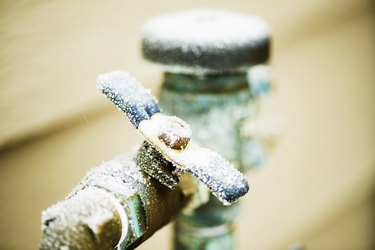Prevent Frozen Pipes in Cold Weather: Professional Advice
Prevent Frozen Pipes in Cold Weather: Professional Advice
Blog Article
Almost everyone maintains his or her own opinion on the subject of How to Prevent Your Pipes From Freezing.

Winter can ruin your plumbing, particularly by freezing pipes. Here's how to prevent it from taking place and what to do if it does.
Introduction
As temperature levels decrease, the danger of icy pipelines boosts, potentially leading to costly repairs and water damages. Comprehending how to avoid frozen pipelines is important for home owners in chilly climates.
Understanding Icy Pipes
What creates pipes to ice up?
Pipelines freeze when exposed to temperatures listed below 32 ° F (0 ° C) for prolonged durations. As water inside the pipes ices up, it increases, putting pressure on the pipeline walls and possibly creating them to break.
Threats and problems
Frozen pipelines can bring about water supply disruptions, building damage, and costly repair work. Burst pipes can flooding homes and create comprehensive structural damages.
Indications of Frozen Water Lines
Identifying frozen pipelines early can stop them from breaking.
Exactly how to determine icy pipelines
Search for lowered water flow from faucets, unusual odors or sounds from pipes, and noticeable frost on subjected pipelines.
Avoidance Tips
Insulating at risk pipelines
Cover pipes in insulation sleeves or use warmth tape to safeguard them from freezing temperature levels. Focus on pipelines in unheated or outside locations of the home.
Heating methods
Maintain interior areas sufficiently warmed, especially areas with plumbing. Open up cabinet doors to enable cozy air to circulate around pipes under sinks.
Safeguarding Exterior Plumbing
Garden hose pipes and outdoor faucets
Detach and drain pipes garden hose pipes before winter months. Install frost-proof faucets or cover outside faucets with protected caps.
What to Do If Your Pipelines Freeze
Immediate actions to take
If you suspect frozen pipelines, keep faucets available to relieve stress as the ice melts. Utilize a hairdryer or towels taken in hot water to thaw pipes gradually.
Long-Term Solutions
Architectural adjustments
Consider rerouting pipes far from exterior walls or unheated locations. Add extra insulation to attics, basements, and crawl spaces.
Upgrading insulation
Invest in high-grade insulation for pipelines, attic rooms, and wall surfaces. Correct insulation helps maintain consistent temperature levels and decreases the risk of icy pipes.
Conclusion
Preventing frozen pipes needs aggressive procedures and fast reactions. By recognizing the reasons, indications, and safety nets, home owners can secure their pipes during cold weather.
5 Ways to Prevent Frozen Pipes
Drain Outdoor Faucets and Disconnect Hoses
First, close the shut-off valve that controls the flow of water in the pipe to your outdoor faucet. Then, head outside to disconnect and drain your hose and open the outdoor faucet to allow the water to completely drain out of the line. Turn off the faucet when done. Finally, head back to the shut-off valve and drain the remaining water inside the pipe into a bucket or container. Additionally, if you have a home irrigation system, you should consider hiring an expert to clear the system of water each year.
Insulate Pipes
One of the best and most cost-effective methods for preventing frozen water pipes is to wrap your pipes with insulation. This is especially important for areas in your home that aren’t exposed to heat, such as an attic. We suggest using foam sleeves, which can typically be found at your local hardware store.
Keep Heat Running at 65
Your pipes are located inside your walls, and the temperature there is much colder than the rest of the house. To prevent your pipes from freezing, The Insurance Information Institute suggests that you keep your home heated to at least 65 degrees, even when traveling. You may want to invest in smart devices that can keep an eye on the temperature in your home while you’re away.
Leave Water Dripping
Moving water — even a small trickle — can prevent ice from forming inside your pipes. When freezing temps are imminent, start a drip of water from all faucets that serve exposed pipes. Leaving a few faucets running will also help relieve pressure inside the pipes and help prevent a rupture if the water inside freezes.
Open Cupboard Doors
Warm your kitchen and bathroom pipes by opening cupboards and vanities. You should also leave your interior doors ajar to help warm air circulate evenly throughout your home.

I discovered that article on Winter Plumbing Precautions: Preventing Frozen Pipes when exploring the web. Don't hesitate to pause to promote this write-up if you enjoyed it. I thank you for reading our article about 6 Ways to Prevent Frozen Pipes.
Book Instantly Report this page